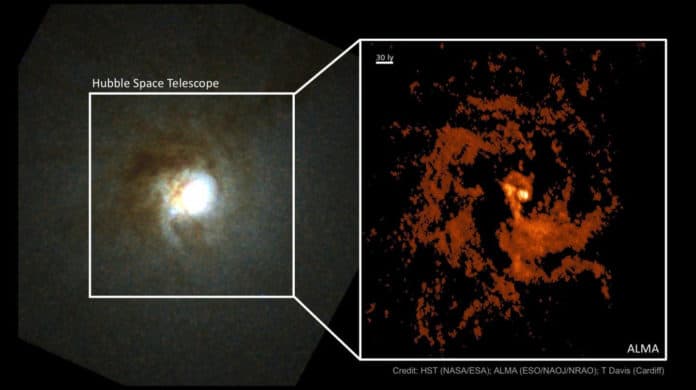Primordial black holes are thought to have formed in the early universe, soon after the big bang. But, it remains largely unknown whether such supermassive black holes were formed in the extreme conditions shortly after the big bang, in a process dubbed a ‘direct collapse,’ or were grown much later from ‘seed’ black holes resulting from the death of massive stars.
A study by the Cardiff University scientists has proposed a new technique that can help them zoom in one of these mysterious cosmic objects in unprecedented detail.
For a very long time, astronomers are searching for the supermassive black holes with the lowest mass as they are the missing links needed to decipher this problem.
Now, in a new study, scientists revealed one of the lowest-mass SMBHs ever observed at the center of a nearby galaxy, weighing less than one million times the mass of our sun. This supermassive black hole lives in a galaxy that is familiarly known as “Mirach’s Ghost.”
The discovery was made using a new technique with the Atacama Large Millimeter/submillimeter Array (ALMA), a state-of-the-art telescope situated high on the Chajnantor plateau in the Chilean Andes that is used to study light from some of the coldest objects in the Universe.
Dr. Tim Davis from Cardiff University’s School of Physics and Astronomy said, “The SMBH in Mirach’s Ghost appears to have a mass within the range predicted by ‘direct collapse’ models. We know it is currently active and swallowing gas, so some of the more extreme ‘direct collapse’ models that only make very massive SMBHs cannot be true.”
“This on its own is not enough to definitively tell the difference between the ‘seed’ picture and ‘direct collapse’ – we need to understand the statistics for that—but this is a massive step in the right direction.”
Dr. Marc Sarzi, a member of Dr. Davis’ team from the Armagh Observatory & Planetarium, said, “Our study demonstrates that with this new technique we can begin to explore both the properties and origins of these mysterious objects. If there is a minimum mass for a supermassive black hole, we haven’t found it yet.”
Journal Reference:
- Timothy A Davis et al. Revealing the intermediate-mass black hole at the heart of the dwarf galaxy NGC 404 with sub-parsec resolution ALMA observations, Monthly Notices of the Royal Astronomical Society (2020). DOI: 10.1093/mnras/staa1567
